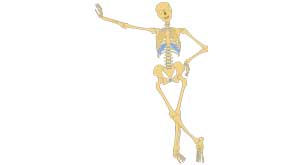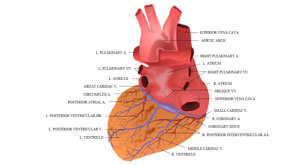Human Body Facts
Teach Kids Interesting Facts about the Human Body
Posted by Admin / in Science Facts
The human body is an intricate combination of bones, muscles, organs and parts that allow us to do some amazing things. No other living thing on Earth is able to create the things we can with our brain and our hands. People have created things to do almost everything animals can do such as diving deep under the oceans and flying high in the skies. We also have found ways to help repair our bodies when they are broken or sick. Here are some very interesting facts about the human body.

The human body has many organs and parts that allow it to do some amazing things.
Interesting Facts About the Human Body
- A sneeze can move at over 100 mph (161 km/h)
- The human body contains metals absorbed from food or contact. The average person's body contains enough iron it in to make an iron nail 3 inches long (7.6 cm long).
- The human body contains blood that helps give our body oxygen, protection and more. Blood is complex. Scientists have not discovered how to make new blood. Blood must be donated from a living donor.
- A drop of blood contains over 5 million red blood cells.
- The heart is a powerful organ in the body. Blood pressure created by the heart is capable of squirting blood 30 feet in the air (9.1 meters).
- The average adult male heart weighs 10.5 ounces (300 grams). The average adult female heart weighs 8.75 ounces (250 grams).
- The average baby has a heart that weighs only 3.5 ounces (100 grams).
- The largest muscle in the human body is the buttock muscle, called gluteus maximus, which is used to lift your legs.
- The smallest muscle in the human body is called stampedius and is only 1/16 inch (.127 cm) long. Stampedius is located in the middle ear and is used to stabilize the smallest bone in the body, the stapes.
- The average normal human body temperature is 98.4 degrees Fahrenheit (36.9 degrees Celsius).
- The human body has 206 bones when it is fully grown. At birth a newborn baby has more than 300 bones. As a baby grows many of the bones fuse together.
- Each arm and leg have 30 bones each.
- The skull of a fully grown human has 28 bones.
- 43 muscles are used when you frown, but only 17 muscles are needed to smile.
- Human fingernails grow 0.5 to 4 inches per year (1.4 to 10 cm per year)
- The middle fingernails grows faster than the other fingernails.
- Human fingernails grow 5 times faster than toenails.
- The human body has 5 senses including touch, taste, smell, sight and hearing. Skin and nerves in the body provide the sense of touch. The tongue provides the sense of taste. The nose provides the sense of smell. Eyes provide sight and ears provide hearing. For all the senses the brain and nervous system are needed to recognize the sensors.
- If all the DNA is lined up from a humans' cells, it would extend to the the moon and back to earth 3000 times.
- 99 percent of the DNA is the same in all people.
- The human body is made up of 55-78% of water.
- The average human can survive about 3 minutes without oxygen, 3 to 5 days without water, and approximately 40 days without food. Never try to test any of these limits!

The human body has a structure made up of rigid bones that gives it shape and strength.

The human body has a powerful heart that circulates fresh oxygen-rich blood through a complex system of veins and arteries.
